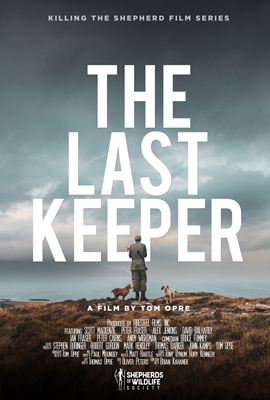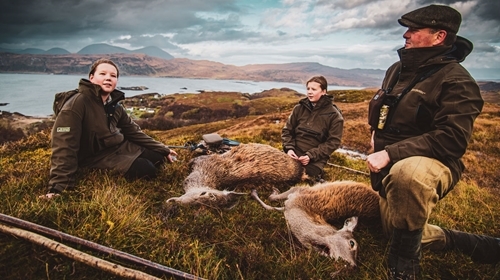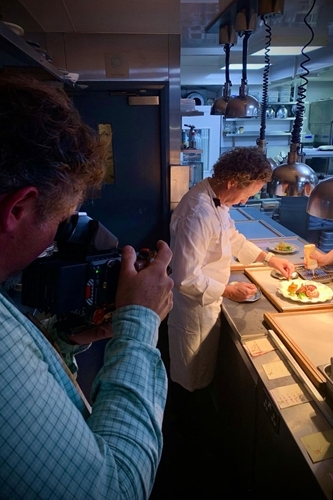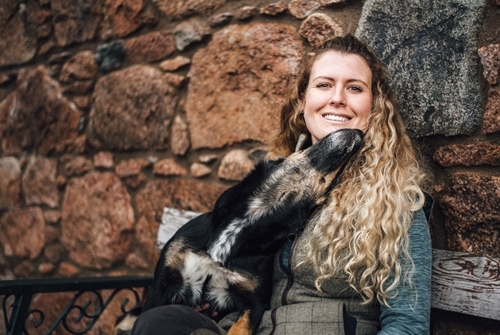By Rory Kennedy, GWCT Director Scotland
 Scotland has long been the ideological fault line for many land-use debates. Hundreds of years of conflict in land ownership bubbles under the surface and is never far from the collective consciousness. Meanwhile new land ownership models are seeing large corporates buying up our uplands, displacing the inhabitants to exploit the carbon gold rush. Little heed seems to be paid to the shifting understanding of carbon science or the biodiversity loss, including some of our most threatened species. Red deer, once the very symbol of Scottish tourism and a mainstay for highland communities for centuries, is now viewed by NGOs and government ministers as an environmental blight, justifying localised eradication. Meanwhile there is a genuine thirst from the people of Scotland to see a ‘wilder’ landscape, potentially complete with large predators. These are debates of huge nuance and rarely is either side truly ‘right’.
Scotland has long been the ideological fault line for many land-use debates. Hundreds of years of conflict in land ownership bubbles under the surface and is never far from the collective consciousness. Meanwhile new land ownership models are seeing large corporates buying up our uplands, displacing the inhabitants to exploit the carbon gold rush. Little heed seems to be paid to the shifting understanding of carbon science or the biodiversity loss, including some of our most threatened species. Red deer, once the very symbol of Scottish tourism and a mainstay for highland communities for centuries, is now viewed by NGOs and government ministers as an environmental blight, justifying localised eradication. Meanwhile there is a genuine thirst from the people of Scotland to see a ‘wilder’ landscape, potentially complete with large predators. These are debates of huge nuance and rarely is either side truly ‘right’.
GWCT Scotland operate within this minefield on a daily basis, though our science is sometimes drowned out by loud, and emotive, voices. This in mind, I was offered an introduction to an investigative, conservation film maker from the US who was considering his next film project being set in Scotland. Director Tom Opre is a Montanan wildlife conservationist and human rights activist, and his last film, Killing the Shepherd, investigated African hunting conservation through the eyes of an indigenous tribe, winning numerous film festival awards. It has been influential in public policy and was shown at the CITES conference, COP 19, US Congress and the House of Lords, as a warning to the unintended impacts on conservation and indigenous people from well-meaning trophy hunting restrictions.
Tom and I first met over a Zoom call, Tom asking me what the key issues were facing Scottish land use. After the longest Zoom call he had ever had, into the wee small hours of UK time, Tom told me he would be booking his plane tickets in the morning and within a month I was showing Tom and his photographer, Tony Bynum, around the country, introducing him to people on both sides of this contentious debate. Tom and Tony returned multiple times over 18 months, regularly staying at mine, and in all Tom recorded over 190 hours of footage.
 Scot Mackenzie, 'the Last Keeper' on Skye with his twin daughters. (Credit: Tony Bynum)
Scot Mackenzie, 'the Last Keeper' on Skye with his twin daughters. (Credit: Tony Bynum)
The GWCT has very much supported this project and a number of GWCT scientists, and scientists with whom we work, appear in the film to provide considered comment amongst the often combative and heated voices. The key aim was that this project was not like the number of beautiful and thought-provoking films produced by various pressure groups within the Scottish debate. Both sides produce content to suit their narrative, and the hope of this film was to rise above this and to focus on the conflict itself, and its consequences. As such, the film has courted a huge range of opinion, including from the likes of land reformer Andy Wightman and prominent rewilding figures from Trees for Life, Scotland the Big Picture and John Muir Trust. The film also doesn’t shy from the major battle lines over deer, in the form of the Assynt Crofters’ dispute with John Muir Trust, as well as local keepers’ backlash over prominent corporate carbon schemes in the Monadhliaths.
 Michelin Star chef, Tom Kitchen, cooking grouse
Michelin Star chef, Tom Kitchen, cooking grouse
on the Glorious 12th. (Credit: Rory Kennedy)
A key theme was to focus on the social consequences of changing land use and give a voice to those communities who feel marginalised and threatened by the current public debate, hence the film’s title, ‘The Last Keeper’. Amongst the various ideological narratives are woven the personal stories of those on the land; the last full-time keeper on Skye; the community of Muck, who have seen their fortunes transformed by shooting tourism; and Alex Jenkins, head keeper on Edinglassie Estate, who was quitting the profession in his prime as he couldn’t see a future in it for him and his family. In particular, Alex and his family gave the team very intimate access to the highs and lows of his final season.
 GWCT Advisor Marlies Nicholai. (Credit: Tony Bynum)
GWCT Advisor Marlies Nicholai. (Credit: Tony Bynum)
Importantly, the GWCT helped make this hugely ambitious project happen because we felt it was a conversation that had to happen. At the same time, this is not a GWCT film, and Tom’s independence allowed a range of voices to be heard that GWCT would not always be comfortable aligning with, on either side of the debate. As such, The Last Keeper is a feature-length film that will draw huge attention to this nuanced debate in a way that no film by us, or any of the other Scottish organisations, could achieve. While the official UK premiere is on 25 April, the film has already had a limited release for film festivals and been warmly received around the world, being placed in film festivals in the US, placed for best Documentary Director and Best Humanitarian Feature Film in the finals of the Cannes World Film Festival, and won Best Documentary in the Paris World Cinema Festival.
 Flanker on Edinglassie Moor. (Credit: Tony Bynum)
Flanker on Edinglassie Moor. (Credit: Tony Bynum)
Like the predecessor film, Killing the Shepherd, it is expected that the film will be available through mainstream digital TV channels, being accessed by hundreds of thousands of viewers worldwide. Meanwhile, the GWCT will be touring this film around rural venues in Scotland over the coming months, hoping the film will prompt genuinely constructive debate. Follow GWCT Scotland on social media for dates.
For updates from the wider project, register at Shepherds of Wildlife.